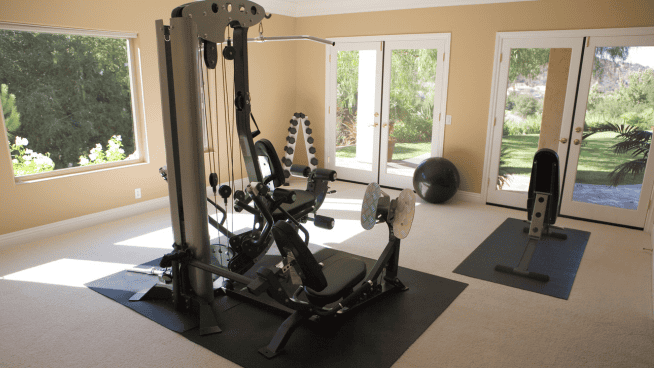3 Breathing Techniques for Athletes to Improve Focus and Relaxation
Relaxed intensity. As contradictory as it sounds, athletes can train to reach a state that is as intense as it is serene—a calm, purposefully focused mind. Being able to harness this state is as useful on the court, field or track as it is on exam or interview day.
The good news is that these breathing techniques are simple. But it takes regular practice and commitment to using them on a regular basis to get their maximum benefit. As a sport psychology consultant, I view breathing practices as important as hydration or stretching.
RELATED: Breathing Exercises to Strengthen Your Lifts
First, how about a little science behind these techniques? On the most basic level, the athlete is practicing self-regulation by controlling his or her breathing. Essentially, when breathing is done in a deep (diaphragmatic) rhythm, the “primitive” parts of the brain (i.e., the areas involved in fight-or-flight) are signaled that the threat has passed.
Typically, there really is no legit danger, but at times our bodies and minds interpret it as so. When an athlete uses breathing techniques, he or she also stabilizes his or her heart rate and induces a slowing effect. The athlete is then able to think clearly and respond appropriately.
Now that we know how it works, here are three helpful exercises any athlete can put into practice immediately.
1. 4-7-8 Breathing. This technique is widely known for a reason: it helps an athlete calm down quickly. To effectively use this technique, breathe in using your diaphragm, and on the inhale, count slowly to 4. One you reach 4 seconds, hold your breath for 7 seconds. Slowly empty your lungs for a count of 8. Repeat 3-4 times or before any high-pressure moment in a game.
RELATED: Breathing Techniques to Improve Recovery
2. 6-2-8 Breathing. Similar to 4-7-8, except this pattern is geared more toward refocusing quickly. This technique can be used between plays or pitches. Inhale on the count of 6, again using your diaphragm. The short hold refreshes the nervous system and helps refocus the athlete. I personally find this technique helpful between repeats on the track.
3. Measured Breathing. This breathing technique is more “customized” by the individual athlete. Simply inhale and exhale on the same count; for example, inhale on a slow count of 5 with a slow exhale of 5. Repeat as many times as needed or use between plays.
I advise trying these out to find out what works best for you. Feel free to change your count slightly for comfort if needed. For more training effect, technology, such as HeartMath, allows you to see your heart rate variability while performing the exercises. Enjoy a more relaxed game!
RELATED: How to Control Your Breathing During an Obstacle Race
[cf]skyword_tracking_tag[/cf]
RECOMMENDED FOR YOU
MOST POPULAR
3 Breathing Techniques for Athletes to Improve Focus and Relaxation
Relaxed intensity. As contradictory as it sounds, athletes can train to reach a state that is as intense as it is serene—a calm, purposefully focused mind. Being able to harness this state is as useful on the court, field or track as it is on exam or interview day.
The good news is that these breathing techniques are simple. But it takes regular practice and commitment to using them on a regular basis to get their maximum benefit. As a sport psychology consultant, I view breathing practices as important as hydration or stretching.
RELATED: Breathing Exercises to Strengthen Your Lifts
First, how about a little science behind these techniques? On the most basic level, the athlete is practicing self-regulation by controlling his or her breathing. Essentially, when breathing is done in a deep (diaphragmatic) rhythm, the “primitive” parts of the brain (i.e., the areas involved in fight-or-flight) are signaled that the threat has passed.
Typically, there really is no legit danger, but at times our bodies and minds interpret it as so. When an athlete uses breathing techniques, he or she also stabilizes his or her heart rate and induces a slowing effect. The athlete is then able to think clearly and respond appropriately.
Now that we know how it works, here are three helpful exercises any athlete can put into practice immediately.
1. 4-7-8 Breathing. This technique is widely known for a reason: it helps an athlete calm down quickly. To effectively use this technique, breathe in using your diaphragm, and on the inhale, count slowly to 4. One you reach 4 seconds, hold your breath for 7 seconds. Slowly empty your lungs for a count of 8. Repeat 3-4 times or before any high-pressure moment in a game.
RELATED: Breathing Techniques to Improve Recovery
2. 6-2-8 Breathing. Similar to 4-7-8, except this pattern is geared more toward refocusing quickly. This technique can be used between plays or pitches. Inhale on the count of 6, again using your diaphragm. The short hold refreshes the nervous system and helps refocus the athlete. I personally find this technique helpful between repeats on the track.
3. Measured Breathing. This breathing technique is more “customized” by the individual athlete. Simply inhale and exhale on the same count; for example, inhale on a slow count of 5 with a slow exhale of 5. Repeat as many times as needed or use between plays.
I advise trying these out to find out what works best for you. Feel free to change your count slightly for comfort if needed. For more training effect, technology, such as HeartMath, allows you to see your heart rate variability while performing the exercises. Enjoy a more relaxed game!
RELATED: How to Control Your Breathing During an Obstacle Race
[cf]skyword_tracking_tag[/cf]











